- Home
- Gary Paulsen
Guts
Guts Read online
Table of Contents
Title Page
Foreword
CHAPTER 1 - HEART ATTACKS, PLANE CRASHES AND FLYING
CHAPTER 2 - MOOSE ATTACKS
CHAPTER 3 - THINGS THAT HURT
CHAPTER 4 - KILLING TO LIVE: HUNTING AND FISHING WITH PRIMITIVE WEAPONS
CHAPTER 5 - EATING EYEBALLS AND GUTS OR STARVING: THE FINE ART OF WILDERNESS NUTRITION
CHAPTER 6 - THE JOY OF COOKING
HOT WATER
Fish or Meat Stew
Plank Food
Spit Cooking
Pit Cooking
ALSO BY GARY PAULSEN
Copyright Page
The world suddenly changed—and it was a sensation I would remember when I wrote Hatchet. With the dying of the engine every aspect of our flight drastically altered. No longer was the forest sliding by beneath us wonderful scenery; it had become a place that would try to wreck the plane, try to freeze us, try to starve us, try to end us. I had spent a lot of time in the bush but it was always at my own behest, when I wanted to be there and in the condition I wanted to be in. Now I was falling, and falling fast, toward a wilderness I was unprepared to deal with; I had the wrong clothes, no weapon, no survival gear except for a sleeping bag and the plane’s emergency kit. In a very real way, I had become the Brian Robeson I would soon write about.
FOREWORD
I’ve written about a boy named Brian Robeson in four books: Hatchet, The River, Brian’s Winter and Brian’s Return. Most of the mail I’ve received about these books has consisted of questions about those parts of my personal life that paralleled Brian’s. To address such questions in general terms I wrote Father Water, Mother Woods: Essays on Fishing and Hunting in the North Woods, which tells of my childhood hunting and fishing and some of what I learned in the woods.
But the result was that the mail, far from settling down, actually increased. So many readers demanded to know specific incidents—when and where I was attacked by a moose, or how the plane crashed or was forced down, or how I killed a deer, as Brian did, or whether the mosquitoes really attacked me as they attacked Brian—that I felt I should tell the stories that inspired Brian’s adventures in the woods, just as they happened to me.
So much of what I did as a boy came to be part of Brian—all of it, in some ways. I hope that Guts satisfies those readers who want to know more about Brian and my life.
CHAPTER 1
HEART ATTACKS, PLANE CRASHES AND FLYING
He was sitting in the bushplane roaring seven thousand feet above the northern wilderness with a pilot who had suffered a massive heart attack and who was either dead or in something close to a coma.
He was alone.
HATCHET
Perhaps the single most catastrophic event in Brian’s life in Hatchet is when the pilot dies of a heart attack. This forces Brian to fly the plane and land—in little more than an “aimed” crash—in a lake, where he swims free and saves himself.
Before I was fortunate enough to become successful as a writer, I worked at home, writing as much as I could between construction jobs. Because I had so much downtime, I added my name to a list of volunteers available to answer emergency ambulance calls. My wife and I lived then in a small prairie town in the middle of farm country, near the confluence of two major highways. The volunteer service was small, and all we had was one old ambulance donated by a city that had bought new ones. But we were the only service available for thousands of square miles.
We answered calls to highway wrecks, farm accidents, poisonings, gunshot accidents and many, many heart attacks. I would go out on the calls alone or with another man who also worked at home.
I saw at least a dozen heart attack victims in the first year. Sadly, most of them were dead before I arrived. The distances we had to cover were so great that we simply could not get there in time to save them. If we did arrive before they died, we had to wait an hour or more for the “flight for life” chopper from the nearest city. Often it arrived too late.
When I came to write Hatchet, I remembered one call to a small ranch some sixty miles northeast of Colorado Springs. It was early in the morning when the siren cut loose, and I ran half-dressed for my old truck, drove to the garage where the ambulance was kept and answered the phone hanging on the wall.
“Please come quick!” a woman said. “It’s my Harvey. He’s having chest pains.”
She gave me the location of the ranch and I took off. It should have taken me a full twenty minutes to get there because of the roughness of the gravel roads but I arrived in fourteen by driving like a maniac.
It was just getting light as I ran into the house carrying our emergency bag, and I could smell what was happening as soon as I entered the kitchen. The lights were on and a man of about fifty was sitting at the kitchen table. His face was gray and he was holding his left shoulder with his right hand. He looked at me and smiled sheepishly, as if to apologize for the inconvenience, and started to say something but then stopped and looked again at the floor in what soldiers call the thousand-yard stare. His wife, a thin woman in jeans and a sweatshirt, stood by him, and she gave me what we called the Look—an expression that meant Thank God you’re here please save him please save him please save him.
But the smell of methane was very strong and the gray look was very bad and as I reached for him to put him on his back, he jolted as if hit by electricity, stiffened in the kitchen chair and fell sideways to the floor. His eyes looked into mine. Directly into my eyes.
“Call the hospital and tell them to bring the chopper now,” I said, and knelt to help him, but he was hit with another jolt that stiffened him and his eyes opened wide and the smell grew much stronger and I knew he was gone. There was, of course, hope—there is always hope. Even when I was called to car accidents and saw children I knew were dead, I would keep working on them because I could not bring myself to accept their death—the hope would not allow it—and I worked on this man now though the smell came up and the skin grew cold. I kept at the CPR because the woman kept giving me the Look and I could not give up hope. But minutes passed and then half an hour before I heard the sound of the rotors—which was very good time, though much too late for this man— and I kept working on him though I knew he was dead and I had seen him die, seen him move from his life into his death, and though I had seen death many times before, I had not seen it in this way. Not in the way his eyes had looked into mine while the life left him.
Years later, when I came to write Hatchet and the scene where the pilot is dying, I remembered this man of all the men I saw dead from heart attacks and car wrecks and farm accidents. I remembered him and his eyes and I put him in the plane next to Brian because he was, above all things, real, and I wanted the book to be real. But I did not sleep well that night when I wrote him into the book and I will not sleep well tonight thinking of his eyes.
In some strange warp of fate I was to witness an airplane crash, or its immediate after-math, almost exactly one week after that man died. This would also go into Hatchet.
Few people realize that the land rises southeast of Denver, just as it does to the west, where the Rockies lie. Grass hills slope gently upward, slightly higher than the Denver airport, for fifty or sixty miles, then taper off into the prairies of Kansas.
One pilot did not check his charts and took off from Denver at a low altitude, thinking that the ground would fall away gently below him. He hit the top six feet of a dirt ridge at 180 knots cruising speed. I was on the scene within four hours of the crash and the only recognizable item was the engine, a crumpled ball of steel and oil stains.
Everything else—the three passengers, who couldn’t have known what hit them, the seats, the wings, the fuselage, everything— was torn and flattened and shattered. The bodies simply did not
exist, not even as bits of pieces, and the investigative team finally gave up trying to make any sense from the crash. The debris, mechanical and human, extended from the ridge where the plane had first struck, spreading out in an oval a hundred yards wide and a quarter mile long. Most of the wreckage was in quarter- or half-dollar-sized pieces. Had the pilot flown a mere six feet higher, he would have been safe. Instead, the image of the destruction that resulted from a full-speed collision with the ground came back to me when I later wrote the scene in Hatchet.
I had seen other plane wrecks. I saw fighters crash when I was in the military—spectacular crashes, sometimes with the pilot dying, though more often ejecting safely— but those were extreme events with extreme machines and the dynamics would not necessarily apply here. Jet fighters at work, training or fighting, are always, always pushing their performance envelope, as are the pilots—they must be that way to stay alive in combat.
In 1946, when I was seven years old and on a ship headed to the Philippines, I saw a passenger plane ditch in the Pacific. It was a C-54, a four-engine propeller-driven plane used for carrying freight and passengers during the Second World War. It was usually very reliable, but in this case there was some problem that affected all four engines and they had to ditch. The captain of our ship stopped in midocean, and the C-54 circled until the pilot could bring the plane in as close as possible to the ship. The ocean was nearly flat, or seemed so, but the plane appeared to skip when it first hit; then it moved slightly sideways in the air, then hit again and broke in two about two thirds of the way back to the tail. We were close enough to see people spilling out into the water, and when the plane settled down and stopped, more people emerged from the doors and onto the wing. They were all women and children— later we learned that they had been on their way to see their husbands and fathers—and at this point the loss of life was not so terrible. Even those thrown clear had life jackets on and were moving in the water, and the lifeboats from the ship were already lowered and on their way to pick up survivors.
But the ship was very slow—barely making seven knots—and full of people, and hence full of food garbage from the galley that was collected and then thrown off the stern each day. Sharks, dozens, scores, perhaps hundreds of them, were following the ship to eat the trash, and as soon as the plane hit the water the sharks made for the wreckage. The plane sank almost immediately, and in the minutes it took for the boats to reach the people, the sharks tore into them. It was as bad as anything I have ever seen. At times the sailors had to beat the sharks off and pull the people out of their mouths in a kind of horrible tug-of-war.
Later, when I was writing, I remembered the way the plane broke in two on the seemingly flat and still water; it was as if the plane had hit a brick surface instead of liquid. Research showed me that while large passenger planes almost always break in half on impact with water (depending on the height of the waves), single-engine or smaller planes almost never do. But I remembered the solidity of that impact when I came to write of Brian crashing the Cessna and the way the water might look soft but act like concrete.
Although I have never crashed in a Cessna 406 (and I hope I never do), I nearly crashed in one and have been in a forced landing in another, and both times it seemed I would certainly die.
Both incidents occurred in Alaska in the winter after I ran my second Iditarod Trail Sled Dog Race. After running the first I had written the novel Dogsong, which brought me some recognition. I was touring the state, talking in villages about writing and running dogs and flying from village to village in a Cessna 406 bushplane.
The pilot seemed very young, but then I was getting to an age when a lot of people seemed young, and he was very competent, and he did the preflight checks well, and though we were usually the only two on the plane, he always repeated his lecture about safety belts, the location of emergency gear and fire extinguishers and how to evacuate the plane. It was winter and we were heading to a village in the interior well north of Fairbanks. It was very cold—perhaps fifty below—and I had stupidly not brought parkas or proper winter clothing because in two days I was due to fly out of Anchorage back to the lower forty-eight. We were cruising at approximately three thousand feet over winter-clad forest. Now and then I could see a moose, once I thought I saw a wolf, and I was just musing about how much I truly loved the woods, the wildness of it, when the engine stopped.
It did not stop dead. Our forward progress kept the propeller turning, windmilling, but it was clear that the engine was no longer firing and we had gone dead-stick: no engines, no controls. The pilot immediately put the plane into a glide to keep up airspeed.
The world suddenly changed—and it was a sensation I would remember when I wrote Hatchet. With the dying of the engine every aspect of our flight drastically altered. No longer was the forest sliding by beneath us wonderful scenery; it had become a place that would try to wreck the plane, try to freeze us, try to starve us, try to end us. I had spent a lot of time in the bush but it was always at my own behest, when I wanted to be there and in the condition I wanted to be in. Now I was falling, and falling fast, toward a wilderness I was unprepared to deal with; I had the wrong clothes, no weapon, no survival gear except for a sleeping bag and the plane’s emergency kit. In a very real way, I had become the Brian Robeson I would soon write about.
The pilot was busy, trying to restart the engine, working to raise somebody on the radio, reviewing emergency procedures (pull the seat belt tight, protect your face), keeping the right glide angle to hold the plane in the air as long as possible and yet maintain flying speed, and all the while trying to locate a place suitable for an emergency landing.
In my own way, I was equally busy. While he worked with the plane I was thinking of what lay ahead, trying to deal with the unknown, trying not to think of the crashes I’d seen in the army, or of that long-ago plane hitting the water in the Pacific—although in northern Alaska’s midwinter a water landing was the least of my concerns.
I needn’t have worried. The plane was equipped both with wheels and with skis (the wheels protruded through holes in the skis) and the young pilot was very professional. The country below us was covered with small streams and rivers, all frozen into ribbons of white, and he picked one, pulled the flaps a bit, slipped the plane slightly down to the side and landed neatly and almost delicately on a river that at first seemed too narrow and then, as we approached the ground, appeared wide enough for a passenger jet. The plane slid easily on the snowpack over the river ice and settled and stopped.
“No worry,” he said, taking a small tool kit from beneath the seat. “It’ll just take a minute, happens all the time, just stay in your seat. . . .” And he jumped out, mumbling something about ice or oil or water in the gas. He had slipped a parka on and the hood muffled his voice.
Oh, I thought, oh, good. So we don’t have to worry, because the engine-stopping happens all the time. That made me feel much better.
Off to the side of the frozen river I could see moose tracks going up the bank in the snow and they seemed fresh and I was thinking that if we were here very long, at least we would have meat—if there was a rifle in the emergency pack, or perhaps I could make a bow if we had much time; I had made bows before and hunted with them and the main thing was that we had matches and we were in woods so there was plenty of firewood and we could take a moose for meat and do well. . . .
But the pilot was as good as his word. In less than five minutes he climbed back into the cockpit, pumped the throttle and hit a switch or two and the engine roared to life.
“Water,” I heard him yell over the engine noise. “Fuel line . . . condensation . . . bubble . . . clear . . .”
I nodded but knew little more than I had before except that the engine was running and sounded even and healthy. The part of the frozen river he had landed on was straight for another mile, with tree-covered hills fairly close on either side. He aimed the plane down the middle of the river and gunned the throttle. We seemed to leap off
the snow and were airborne, flying on to the next village a hundred miles away. I watched the frozen forest slide by with new interest and when I wrote of Brian in the same seat, in the same plane, I remembered the feeling of the engine stopping and the propeller windmilling as the plane glided helplessly toward the earth.
The very next year I would gain intimate knowledge of another part of a 406 that Brian would come to know, the tail section, though in a drastically different way than Brian learned of it.
I was in my second Iditarod and it was brutal. I am not inordinately superstitious but this was the thirteenth running of the race and it seemed as if the whole thing was jinxed. The weather was absolutely appalling, with blizzards and wind so hard it would drive snow and ice particles into your eyes with the lids closed, at times sucking the air out of your lungs. I had run in bad weather, but never like this. At one point, in the middle of a blizzard in the dead middle of a dark night, I could not see one foot past the front of the sled, could not see a single dog or any part of a trail, and when the team stopped I crawled forward on my hands and knees (you couldn’t stand without getting blown over) and found my lead dog, a great little three-year-old named Little Buck, trying to find the edge of the trail in the deep snow by feeling with his feet.
On top of this nightmare of weather there had been a foul-up and they had somehow failed to ship our dog food to the checkpoints. The first time it happened, the mushers got together and hired a helicopter to fly food in, though we had already paid for shipment. When it happened again, there was a three-day hold on the race while we all sat and waited for the food to arrive at drop points ahead of us. Eventually the race went on but the tempo (and yes, there are a flow and a plan to the race) was altered, perhaps destroyed. It became a clawing run to try to get in front and stay there.
Libby Riddles won the race, the first woman to do so, by heading across sea ice in wind and storm so strong that nobody else would attempt it. I tried a day after she left and my sled dogs blew back on top of me in a furry pile. Caught on the sea ice and unable to compete, I got word to Nome—by telling a musher, who told another musher, who told still another musher, who told a ham-radio operator at the checkpoint where I was—that I was ready to get off the ice. My handler, waiting in Nome, found a bushplane to come and get me and my dogs.

 Hatchet br-1
Hatchet br-1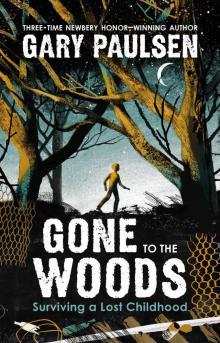 Gone to the Woods
Gone to the Woods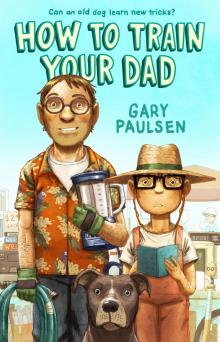 How to Train Your Dad
How to Train Your Dad The Haymeadow
The Haymeadow Amos Binder, Secret Agent
Amos Binder, Secret Agent The River br-2
The River br-2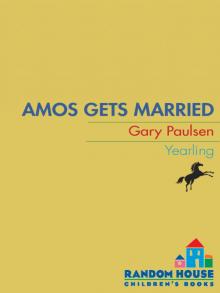 Amos Gets Married
Amos Gets Married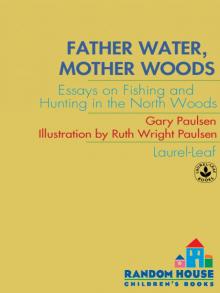 Father Water, Mother Woods
Father Water, Mother Woods Dunc and the Scam Artists
Dunc and the Scam Artists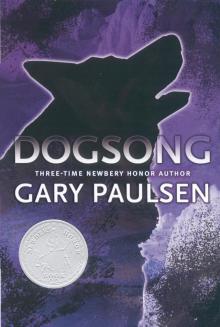 Dogsong
Dogsong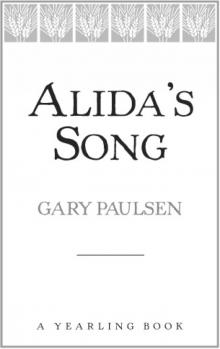 Alida's Song
Alida's Song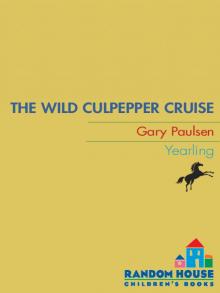 The Wild Culpepper Cruise
The Wild Culpepper Cruise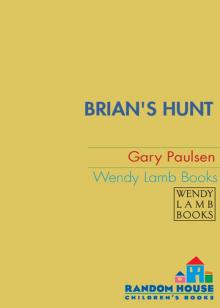 Brian's Hunt
Brian's Hunt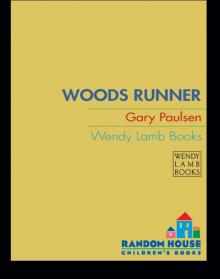 Woods Runner
Woods Runner Dunc and Amos on Thin Ice
Dunc and Amos on Thin Ice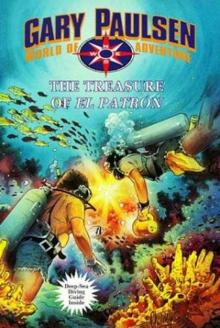 The Treasure of El Patron
The Treasure of El Patron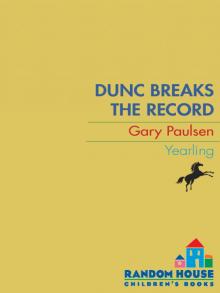 Dunc Breaks the Record
Dunc Breaks the Record Harris and Me
Harris and Me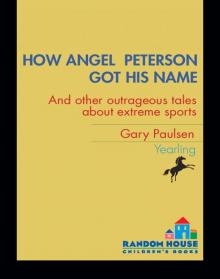 How Angel Peterson Got His Name
How Angel Peterson Got His Name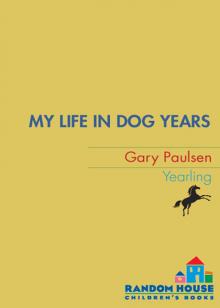 My Life in Dog Years
My Life in Dog Years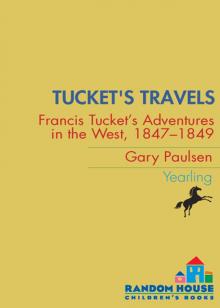 Tucket's Travels
Tucket's Travels Canyons
Canyons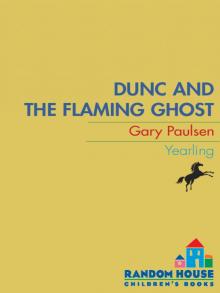 Dunc and the Flaming Ghost
Dunc and the Flaming Ghost The Schernoff Discoveries
The Schernoff Discoveries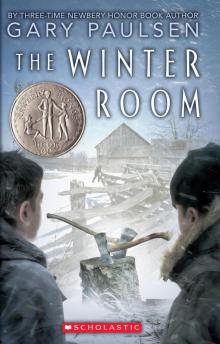 The Winter Room
The Winter Room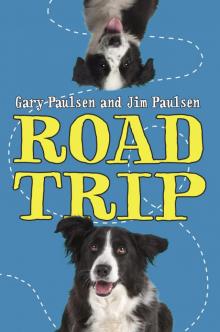 Road Trip
Road Trip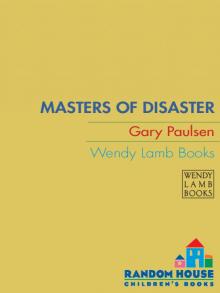 Masters of Disaster
Masters of Disaster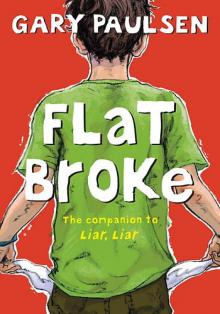 Flat Broke
Flat Broke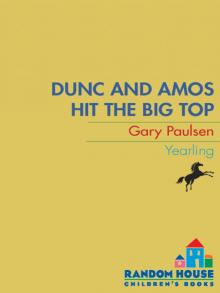 Dunc and Amos Hit the Big Top
Dunc and Amos Hit the Big Top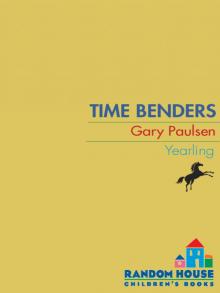 Time Benders
Time Benders Caught by the Sea
Caught by the Sea Dancing Carl
Dancing Carl The Seventh Crystal
The Seventh Crystal The Boy Who Owned the School
The Boy Who Owned the School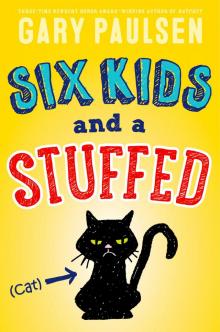 Six Kids and a Stuffed Cat
Six Kids and a Stuffed Cat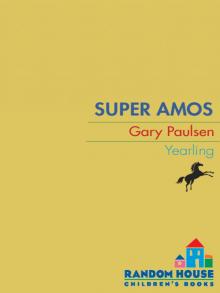 Super Amos
Super Amos Dunc and the Greased Sticks of Doom
Dunc and the Greased Sticks of Doom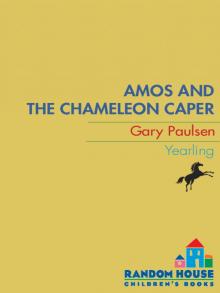 Amos and the Chameleon Caper
Amos and the Chameleon Caper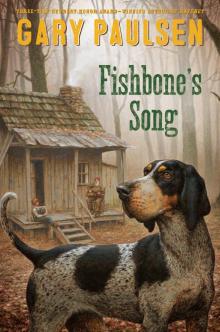 Fishbone's Song
Fishbone's Song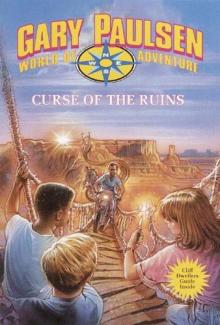 Curse of the Ruins
Curse of the Ruins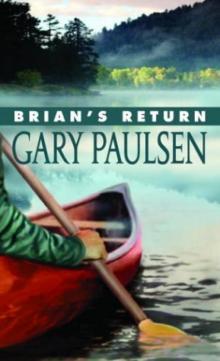 Brian's Return br-4
Brian's Return br-4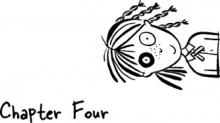 Molly McGinty Has a Really Good Day
Molly McGinty Has a Really Good Day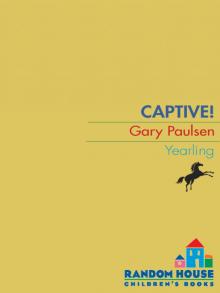 Captive!
Captive! Culpepper's Cannon
Culpepper's Cannon The Car
The Car Puppies, Dogs, and Blue Northers
Puppies, Dogs, and Blue Northers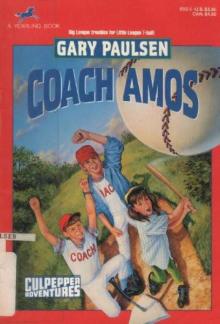 Coach Amos
Coach Amos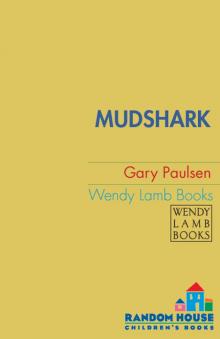 Mudshark
Mudshark The White Fox Chronicles
The White Fox Chronicles Dunc and Amos Meet the Slasher
Dunc and Amos Meet the Slasher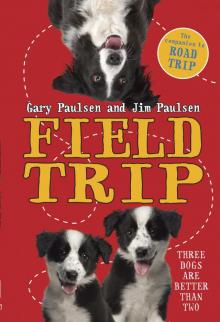 Field Trip
Field Trip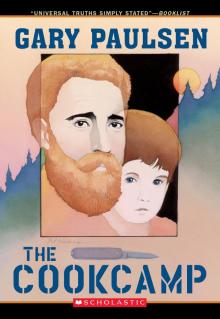 The Cookcamp
The Cookcamp Crush
Crush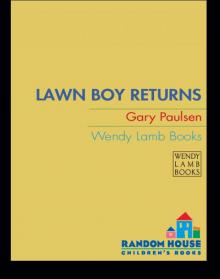 Lawn Boy Returns
Lawn Boy Returns Liar, Liar k-1
Liar, Liar k-1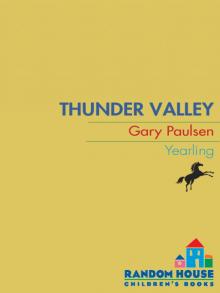 Thunder Valley
Thunder Valley The Tent
The Tent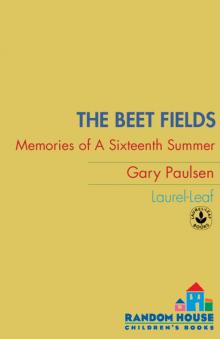 The Beet Fields
The Beet Fields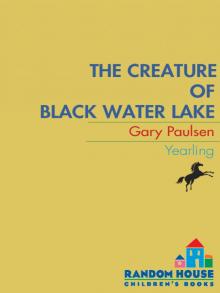 The Creature of Black Water Lake
The Creature of Black Water Lake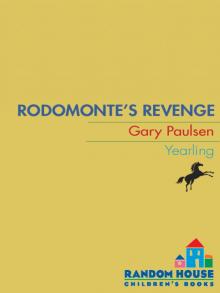 Rodomonte's Revenge
Rodomonte's Revenge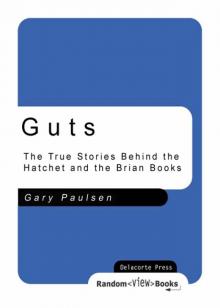 Guts
Guts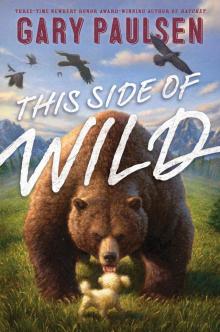 This Side of Wild
This Side of Wild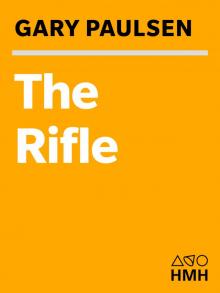 The Rifle
The Rifle The Time Hackers
The Time Hackers Amos Goes Bananas
Amos Goes Bananas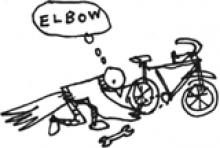 The Amazing Life of Birds
The Amazing Life of Birds Dunc's Undercover Christmas
Dunc's Undercover Christmas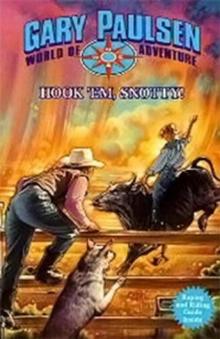 Hook 'Em Snotty
Hook 'Em Snotty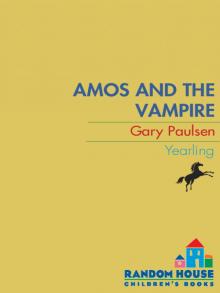 Amos and the Vampire
Amos and the Vampire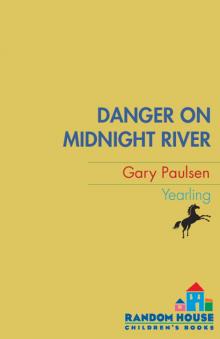 Danger on Midnight River
Danger on Midnight River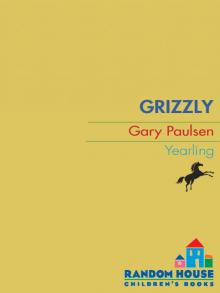 Grizzly
Grizzly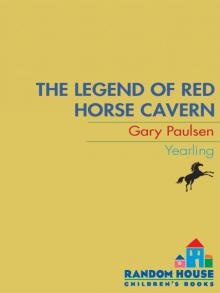 The Legend of Red Horse Cavern
The Legend of Red Horse Cavern The Transall Saga
The Transall Saga Lawn Boy
Lawn Boy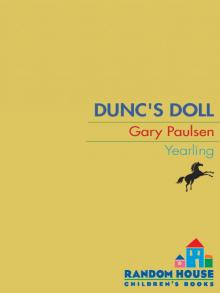 The Case of Dunc's Doll
The Case of Dunc's Doll A Christmas Sonata
A Christmas Sonata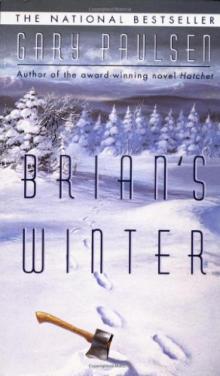 Brian's Winter br-3
Brian's Winter br-3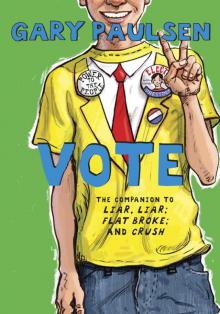 Vote
Vote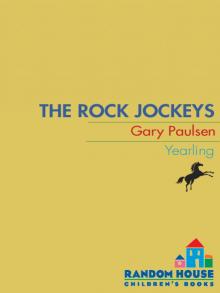 The Rock Jockeys
The Rock Jockeys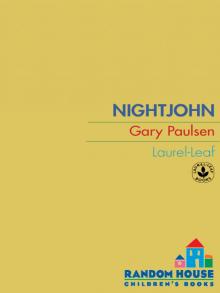 Nightjohn
Nightjohn Escape from Fire Mountain
Escape from Fire Mountain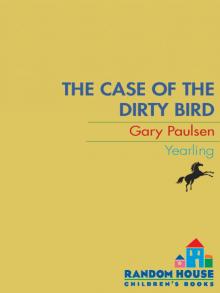 The Case of the Dirty Bird
The Case of the Dirty Bird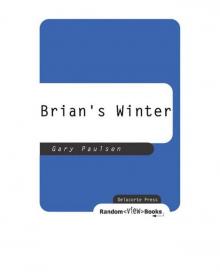 Brian's Winter
Brian's Winter Amos's Killer Concert Caper
Amos's Killer Concert Caper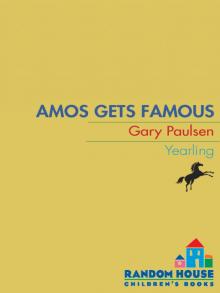 Amos Gets Famous
Amos Gets Famous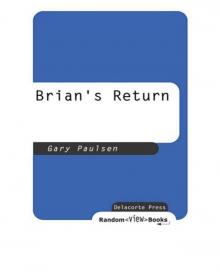 Brian's Return
Brian's Return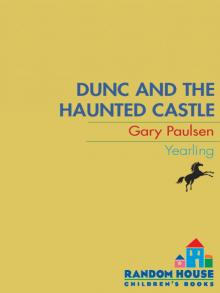 Dunc and the Haunted Castle
Dunc and the Haunted Castle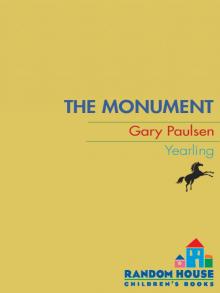 The Monument
The Monument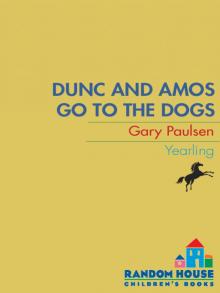 Dunc and Amos Go to the Dogs
Dunc and Amos Go to the Dogs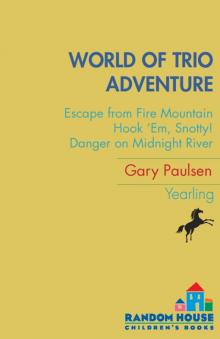 World of Adventure Trio
World of Adventure Trio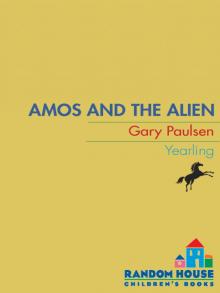 Amos and the Alien
Amos and the Alien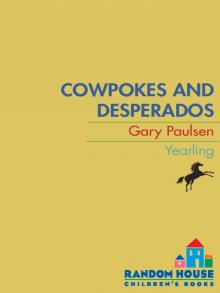 Cowpokes and Desperadoes
Cowpokes and Desperadoes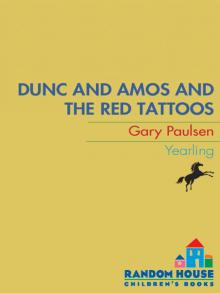 Dunc and Amos and the Red Tattoos
Dunc and Amos and the Red Tattoos Dunc's Dump
Dunc's Dump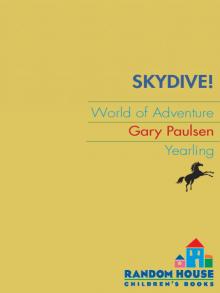 Skydive
Skydive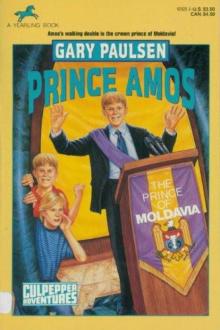 Prince Amos
Prince Amos The Gorgon Slayer
The Gorgon Slayer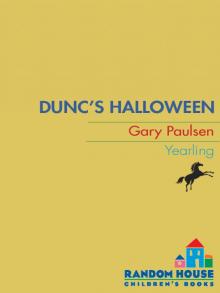 Dunc's Halloween
Dunc's Halloween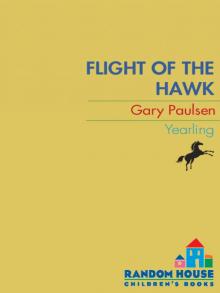 Flight of the Hawk
Flight of the Hawk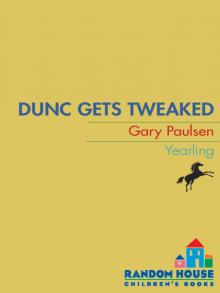 Dunc Gets Tweaked
Dunc Gets Tweaked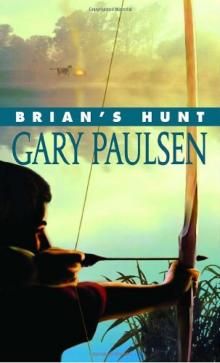 Brian's Hunt br-5
Brian's Hunt br-5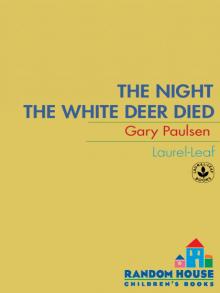 The Night the White Deer Died
The Night the White Deer Died